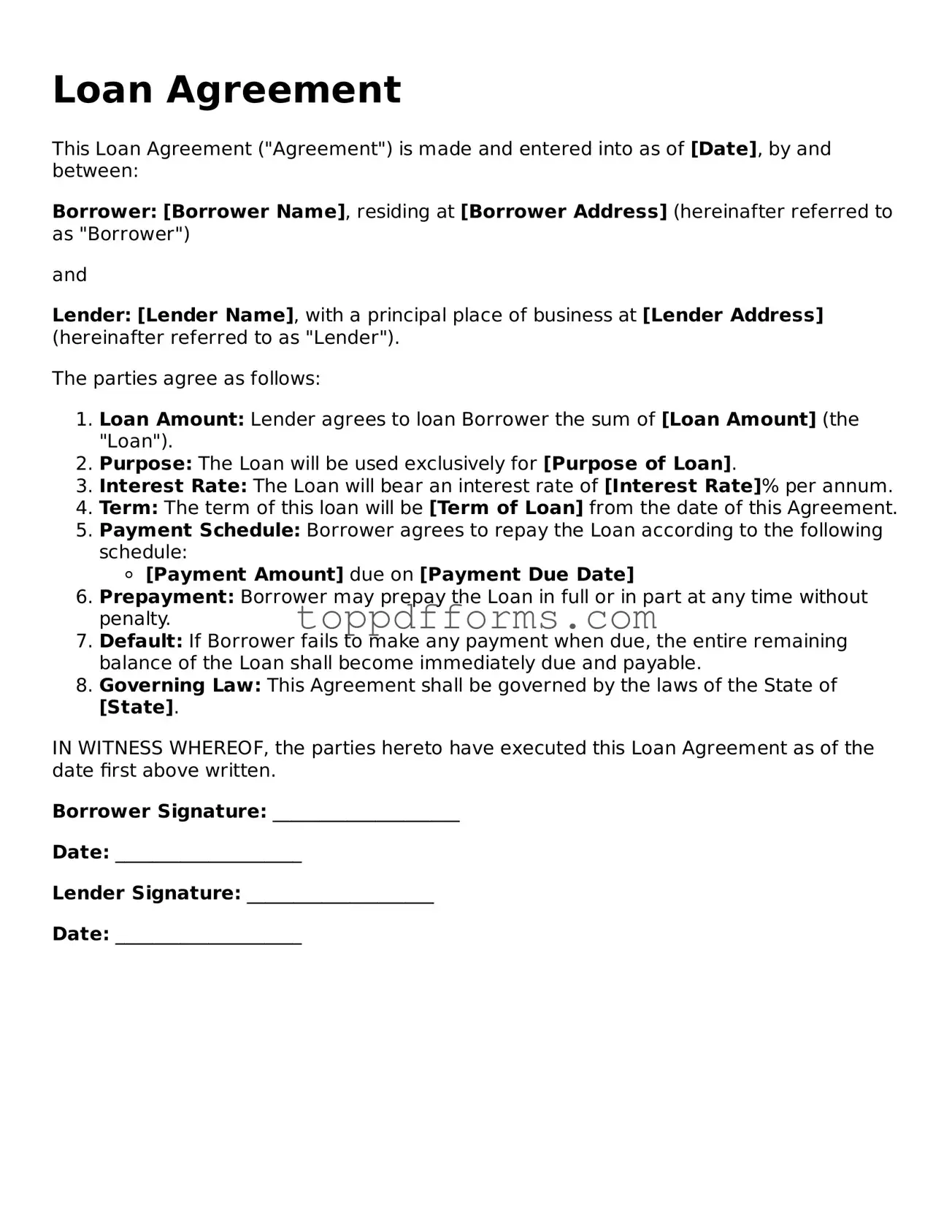What is a Loan Agreement form?
A Loan Agreement form is a legal document that outlines the terms and conditions of a loan between a lender and a borrower. This form typically includes details such as the loan amount, interest rate, repayment schedule, and any collateral involved. It serves to protect both parties by clearly defining their rights and responsibilities throughout the loan process.
Why is it important to have a Loan Agreement?
Having a Loan Agreement is crucial for several reasons. First, it provides a clear record of the loan terms, which can prevent misunderstandings between the lender and borrower. Second, it serves as a legal safeguard in case of disputes. If either party fails to uphold their end of the agreement, the document can be referenced in legal proceedings. Ultimately, it helps ensure that both parties are on the same page and can foster a trusting relationship.
What should be included in a Loan Agreement form?
A comprehensive Loan Agreement should include several key components. These typically are the names and addresses of both the lender and borrower, the principal loan amount, the interest rate, the repayment schedule, and the duration of the loan. Additionally, it may outline any fees, penalties for late payments, and details regarding collateral if applicable. Clear definitions of terms and conditions help mitigate potential conflicts.
Can a Loan Agreement be modified after it is signed?
Yes, a Loan Agreement can be modified after it is signed, but both parties must agree to the changes. It is advisable to document any modifications in writing and have both parties sign the updated agreement. This ensures that the new terms are legally binding and can be referenced in the future. Communication between the lender and borrower is key to making any adjustments smoothly.
What happens if a borrower defaults on a Loan Agreement?
If a borrower defaults on a Loan Agreement, the lender has several options available. Typically, the lender may initiate collection efforts to recover the owed amount. This could involve contacting the borrower to discuss repayment options or, in more severe cases, pursuing legal action. If collateral was involved, the lender might have the right to seize it. It is important for borrowers to communicate with their lenders if they are struggling to make payments, as there may be options for renegotiation or assistance.
